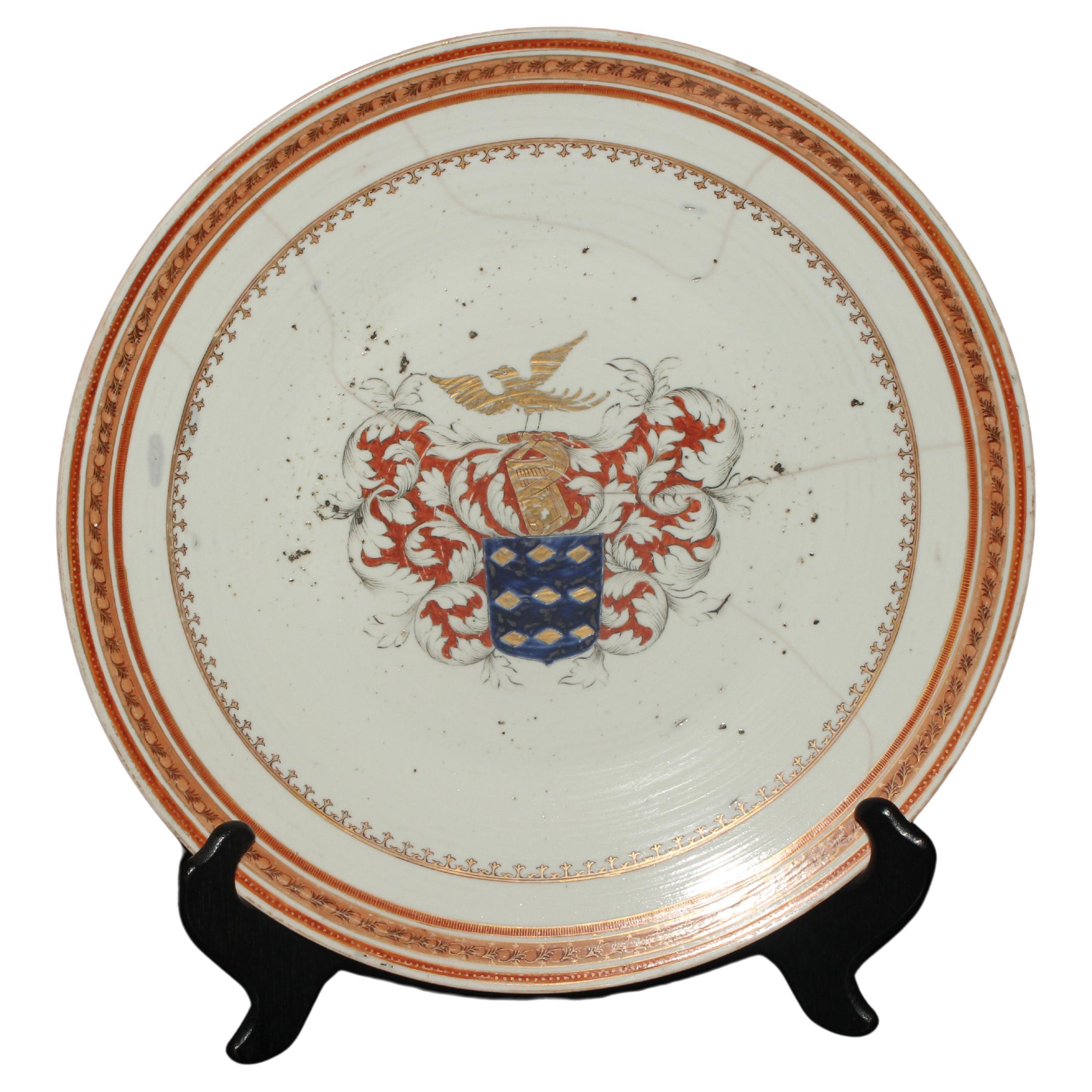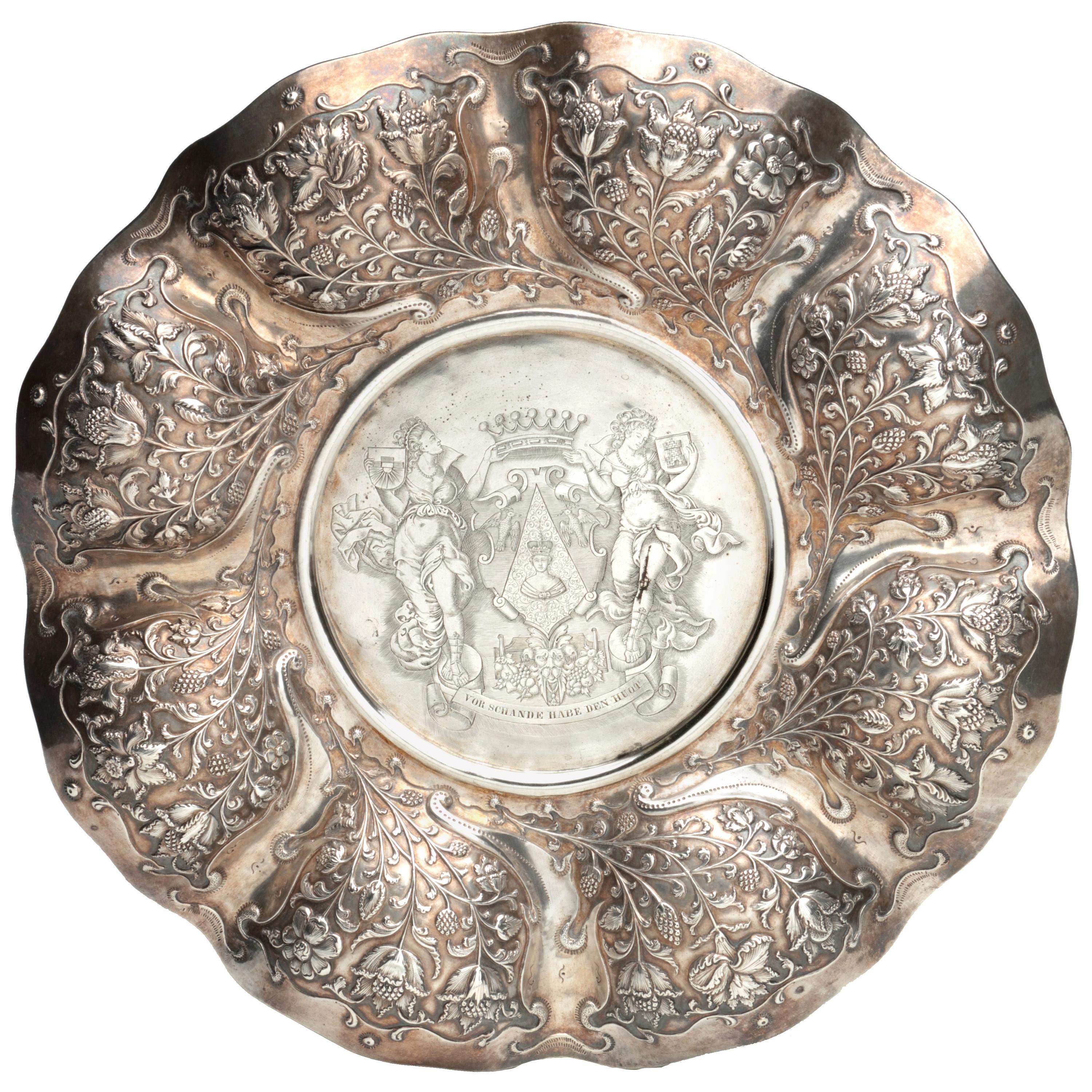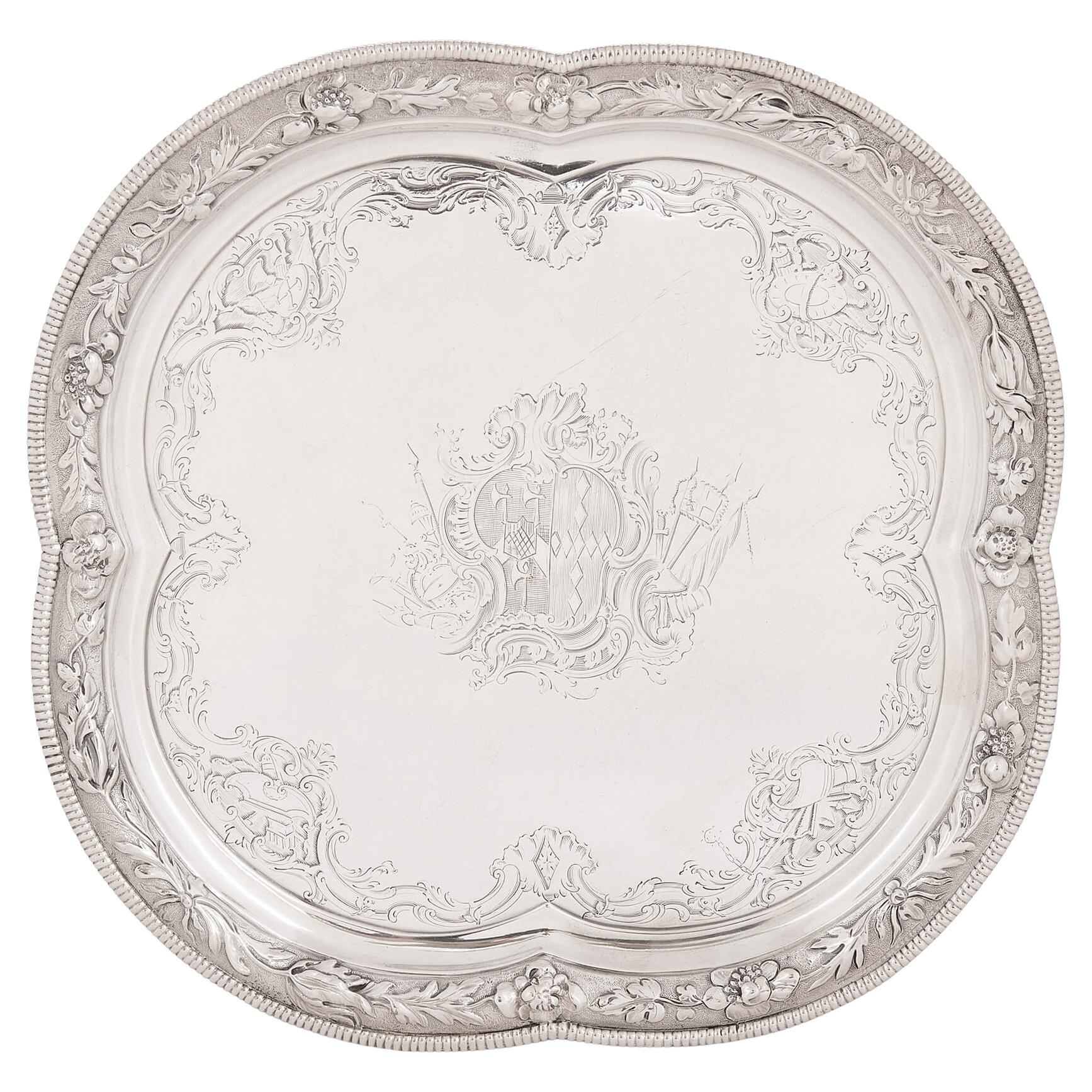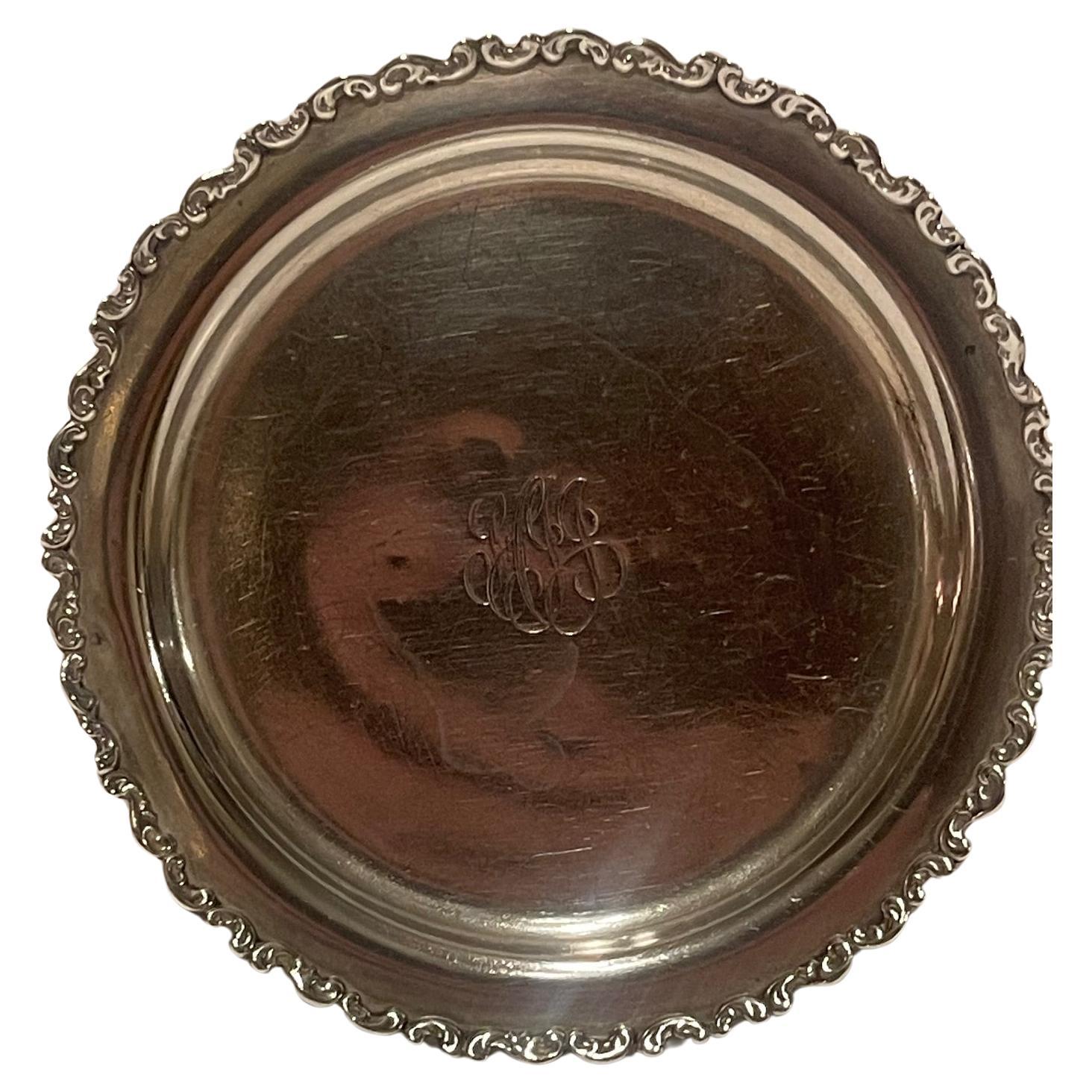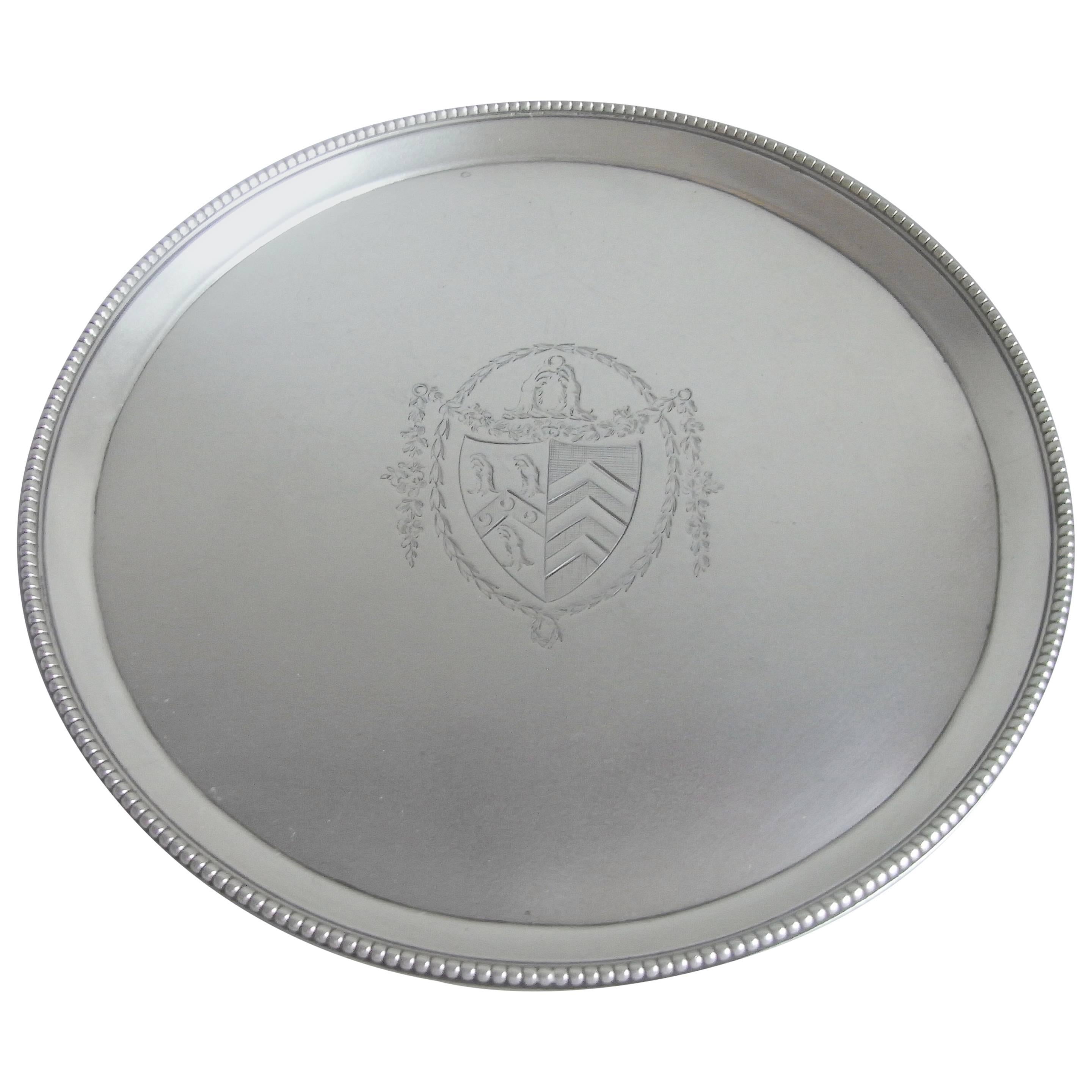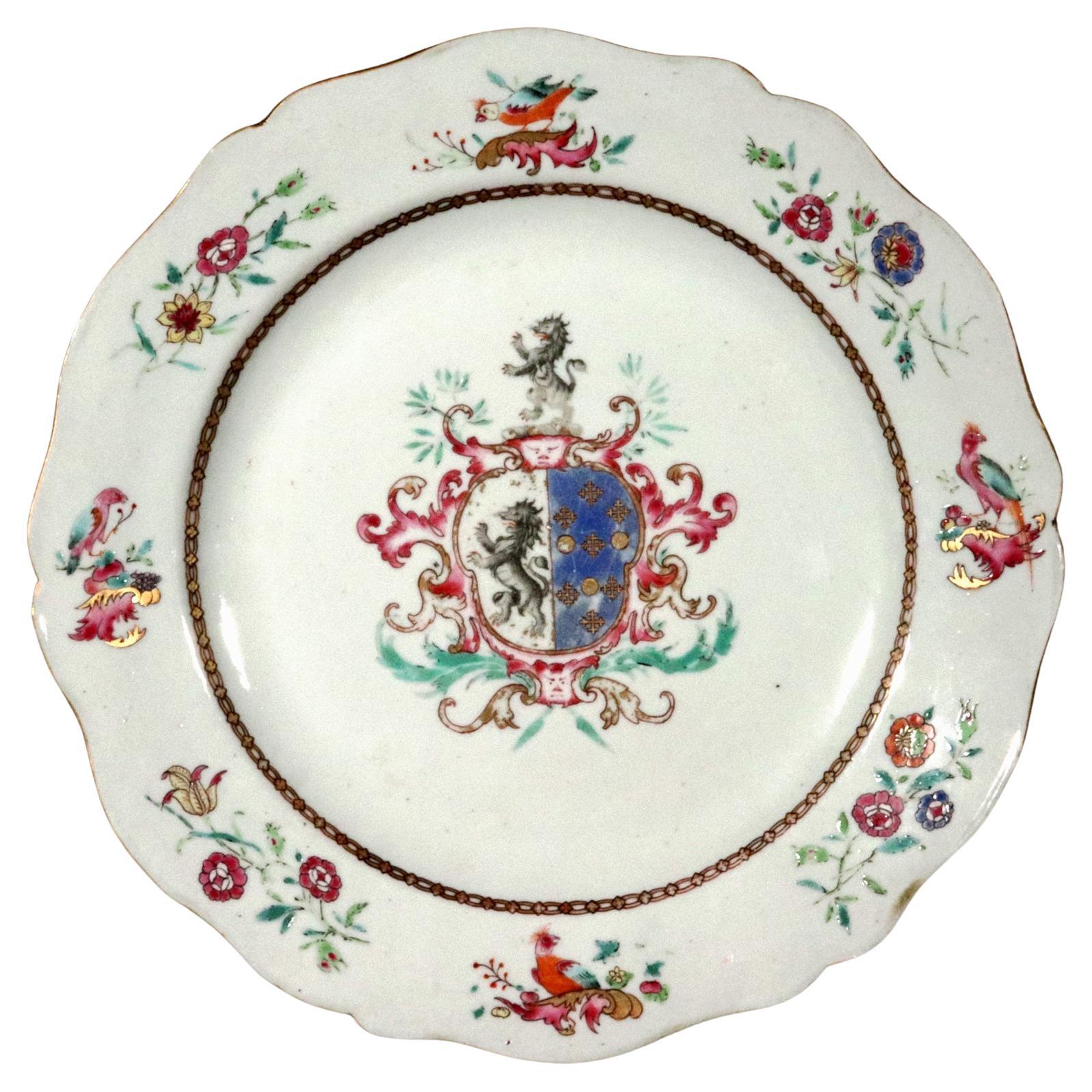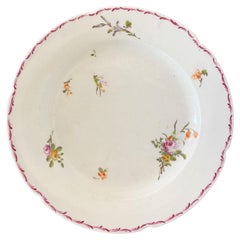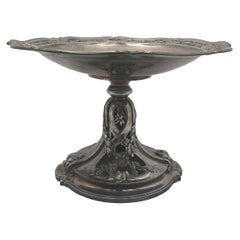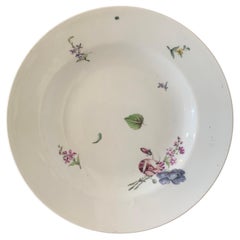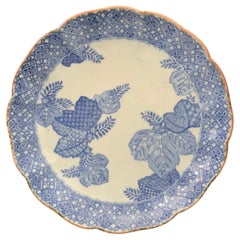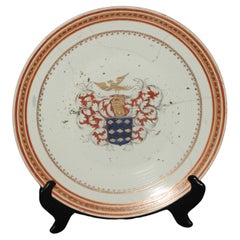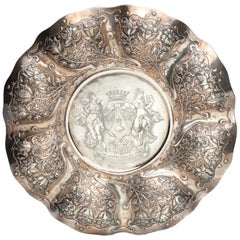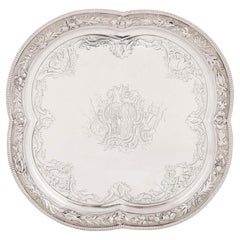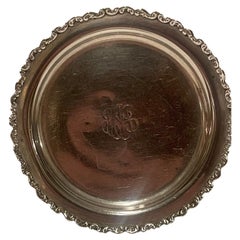Items Similar to Dish with Coat of Arms, 18th Century
Want more images or videos?
Request additional images or videos from the seller
1 of 6
Dish with Coat of Arms, 18th Century
$502.16
£371.75
€420
CA$694.86
A$766.07
CHF 400.78
MX$9,398.25
NOK 5,045.06
SEK 4,717.93
DKK 3,199.30
About the Item
Pewter deep dish with crowned coat of arms with fleur de lys and Chevrons in the center. The
crown topped by a cross is possibly ducal. Chiseled rim. There is a crowned mark almost
obliterated by use on the back of the dish.
Origin: France.
Period: 18th century.
- Dimensions:Height: 1.19 in (3 cm)Diameter: 9.06 in (23 cm)
- Materials and Techniques:
- Period:
- Date of Manufacture:circa 1700
- Condition:Conservation: Very good. Wear consistent with age and use.
- Seller Location:Beuzevillette, FR
- Reference Number:1stDibs: LU2663328148962
About the Seller
4.9
Vetted Professional Seller
Every seller passes strict standards for authenticity and reliability
Established in 2010
1stDibs seller since 2017
300 sales on 1stDibs
Typical response time: 5 hours
- ShippingRetrieving quote...Shipping from: MALAGA, Spain
- Return Policy
Authenticity Guarantee
In the unlikely event there’s an issue with an item’s authenticity, contact us within 1 year for a full refund. DetailsMoney-Back Guarantee
If your item is not as described, is damaged in transit, or does not arrive, contact us within 7 days for a full refund. Details24-Hour Cancellation
You have a 24-hour grace period in which to reconsider your purchase, with no questions asked.Vetted Professional Sellers
Our world-class sellers must adhere to strict standards for service and quality, maintaining the integrity of our listings.Price-Match Guarantee
If you find that a seller listed the same item for a lower price elsewhere, we’ll match it.Trusted Global Delivery
Our best-in-class carrier network provides specialized shipping options worldwide, including custom delivery.More From This Seller
View All18th Century Chinese Flower Plate from the Compagnie Des Indes
Located in Beuzevillette, FR
Beautiful plate of the Compagnie des Indes from the Qianlong period, 18th century. This porcelain soup plate, has very beautiful hand painted decor...
Category
Antique 18th Century Chinese Platters and Serveware
Materials
Porcelain
Louis 15 Style Gallia Centerpiece
Located in Beuzevillette, FR
Coupe Gallia
Rare Gallia centrepiece (coupe) on stand. Model nº: 5181. Gallia is the brand name of the copper-tin alloy patented by Félix Chéron in 1896. It probably contained also ...
Category
Early 20th Century European Louis XV Serving Pieces
Materials
Copper, Tin
Chinese Porcelain Plate From India Company 18th Century
Located in Beuzevillette, FR
Beautiful small white porcelain plate decorated with different flowers such as petunias and phlox. Leaves seem to fly. A small plum is hidden on the back of the plate. We discover a work of extreme finesse. The lines are very fine and delicate.
The arrival of porcelain in Europe was linked to the development of shipping and international trade. Porcelain was very popular in Europe because of its lightness and durability. The importation from China is linked to the lack of mastery of this technique by the Europeans. The French, Dutch and British East India...
Category
Antique Mid-18th Century Chinese Chinese Export Ceramics
Materials
Porcelain
Chinese Soup Plate Inspired by the Blue Family India Compagny, Mid 19th Century
Located in Beuzevillette, FR
Nice « Blanc Bleu » porcelain plate inspired the Compagnie des Indes from XIXth century. This porcelain soup plate represents exotic plant elements. Ornaments are visible on the sides of the plate.
The arrival of porcelain in Europe was linked to the development of shipping and international trade. Porcelain was very popular in Europe because of its lightness and its durability. The import from China is linked to the lack of mastery of this technique by the Europeans. The French, Dutch and British East...
Category
Antique 1850s Chinese Chinese Export Porcelain
Materials
Porcelain
Chinese Plate inspired by The Blue Family Mid 19th Century
Located in Beuzevillette, FR
Nice plate inspired the Compagnie des Indes from the Qianlong period, XVIIIth century, But dating from the middle of 19th Century.
It presents a decoration of birds, Flowers and fo...
Category
Antique Mid-19th Century Chinese Ceramics
Materials
Porcelain
Chinese Plate Inspired by the Blue Family India Compagny, Mid 19th Century
Located in Beuzevillette, FR
Beautiful plate inspired by the Company of India of the Qianlong period, 18th century, but dating from the 19th century. This porcelain soup plate, with a flower represented in the c...
Category
Antique Mid-19th Century Chinese Ceramics
Materials
Porcelain
You May Also Like
18th Century Style Chinese Export Armorial Chop Plate
Located in Chapel Hill, NC
An 18th century style Chinese Export Armorial Chop Plate. With multiple hairlines. Dramatic design. Possibly Samson. Early 20th century. 13"dia., 1 1/4"h.
Category
Early 20th Century Chinese Chinese Export Platters and Serveware
Materials
Ceramic
$198 Sale Price
28% Off
Dutch Colonial Silver Dish with the Von Pfeffel Coat-of-arms, 17th Century
Located in Amsterdam, NL
An unusual Indonesian lobbed silver dish
Jakarta (Batavia) or Coromandel coast, third quarter 17th century, apparently unmarked
The eight lobbed dish exuberantly decorated with floral motifs, with the middle section replaced, consisting of indistinctly marked German silver from the early 19th century, bearing the coat-of-arms of the Von Pfeffel family.
Diam. 30.5 cm
Weight 461 grams
Note:
Lobbed silver dishes with exuberant floral decorations were characteristic of the decorative arts in the Netherlands in the first half of the 17th century. This style of floral decoration was adopted by silversmiths as well as by furniture makers working on the Coromandel Coast and in Batavia, often by workers who had fled the Coromandel Coast because of war and famine. In Batavia this style was known as “Custwerck” (work from the Bengal coast).
These lobbed dishes are seldom marked. Only after 1667 the use of the town mark became obligatory in Batavia but only for silver made in Batavia not for silver imported in Batavia from other VOC settlements. The engraved coat of arms in the centre is a replacement of the original centre.
The coat of arms can be identified as those of Christian Hubert von Pfeffel (1765- 1834). As a diplomat, statesman, ambassador of Bavaria in London and Saxony and councillor to the King of Bavaria, he was made “Freiherr” in 1828 and since then used this coat of arms. His son Karl Maximilian Friederich Hubert Freiherr von Pfeffel (1811-1890) in 1836 married Karoline Adelheid Pauline von Rottenburg (1805-1872), the natural daughter of Prins Paul von Württemberg (1785-1852) and his mistress Margrethe Porth. Paul was the jounger brother of the King Wilhelm I of Württemberg (1781-1864). The heraldic motto of the von Pfeffels Vur Schande habe den Huot means as much as “Beware of Shame”. Christian Hubert Theodoor Marie Karl von Pfeffel Karl Maximilian’s grandson was the last male in the von Pfeffel line. His daughter, Marie Louise (Paris in 1882 - Cornwall 1944), born and grown-up in France, changed her name in de Pfeffel. She was the great grandmother of Boris Alexander de Pfeffel Johnson, the present British Secretary of State. None of the members of the von Pfeffel family had any direct links with the Dutch East Indies but indirectly by way of the Royal House of Württemberg they did.
Sophia Frederika Mathilda von Württemberg (1818-1877), daughter of Wilhelm I King of Württemberg, in 1839 married Willem III...
Category
Antique Late 17th Century Indonesian Dutch Colonial Sterling Silver
Materials
Silver
18th Century Silver Salver by Paul de Lamerie
By Paul de Lamerie
Located in London, GB
18th century silver salver by Paul de Lamerie
English, 1744
Height 3cm, diameter 27cm
Hailing from the workshop of the eminent Dutch-born English sil...
Category
Antique 18th Century English Rococo Sterling Silver
Materials
Silver
English Sterling Silver Salver or Card Tray, 19th Century
Located in Savannah, GA
English Sterling Silver Salver or Card Tray, 19th Century. Marked Sterling
Category
Antique 19th Century Sterling Silver
Materials
Sterling Silver
A very fine George III Salver made in London in 1782 by Thomas Hannam & John Cro
Located in London, GB
The Salver stands on three cast panel feet with scroll ends, and a beaded border. The raised rim is also decorated with a beaded band and the centre is beautifully engraved with a co...
Category
Antique Late 18th Century English More Dining and Entertaining
Chinese Export Armorial Famille Rose Plate, Arms of Poley Impaling Coffin
Located in Downingtown, PA
Chinese Export Armorial Famille Rose Plate,
Arms of Poley Impaling Coffin,
Circa 1755.
The attractive Chinese Export Amorial porcelain plate with a shaped wavy rim depicts a central...
Category
Antique Mid-18th Century Chinese Chinese Export Dinner Plates
Materials
Porcelain
More Ways To Browse
Coat Of Arms Carved
Pewter Dish
Silver Coat Of Arms
Coat Of Arms Plates
Antique Pewter Dish
Coat Of Arms Dinner Plates
Antique Metal Dinner Plates
Antique Blue Cobalt Plate
Antique Shell Sign
Brown And White Plates
Moustier Faience
19th Century Minton Plates
Antique Blue Flower Plate
Antique Bone Plates
Copeland Spode Plate
Luneville Faience
Majolica Plate Strawberry
Piatti Vintage
